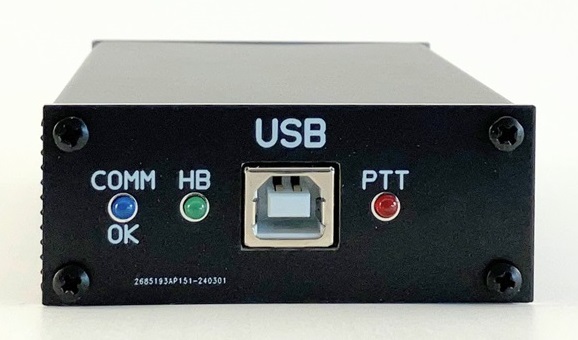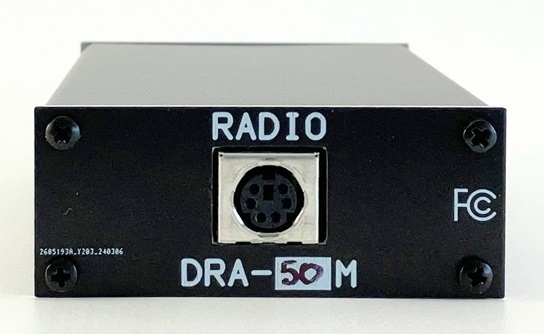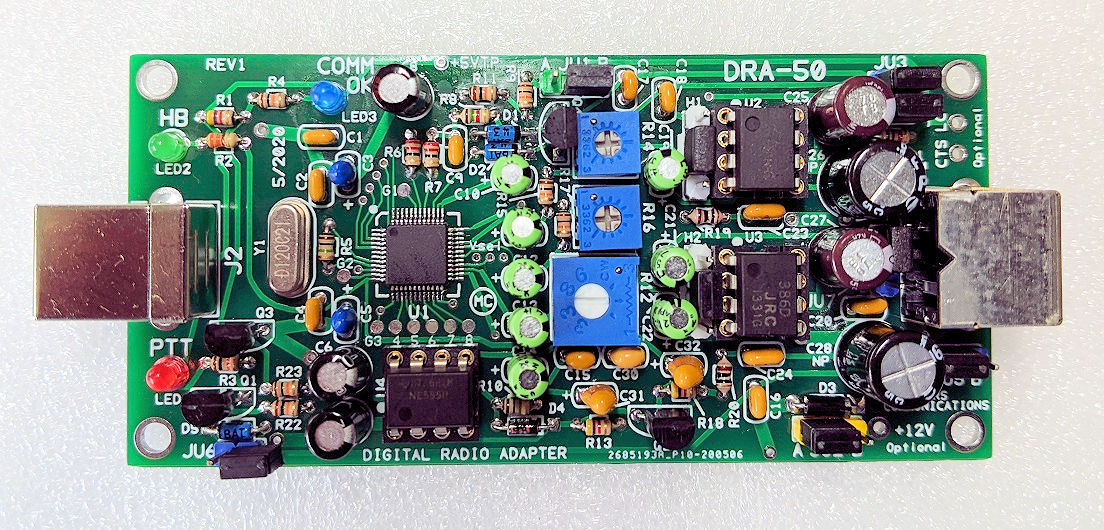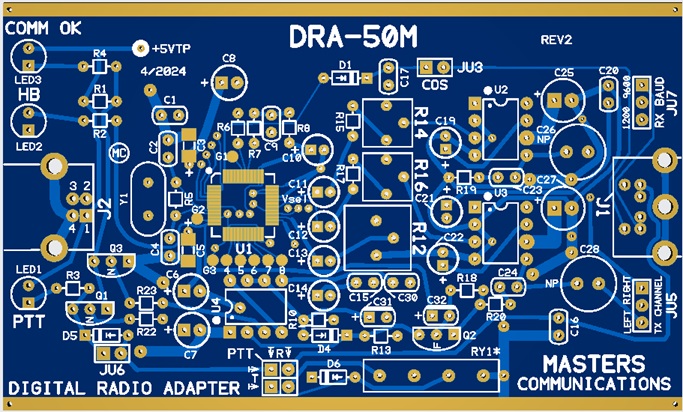Custom Products for the Digital Radio Amateur Enthusiast

|
Custom Products for the Digital Radio Amateur Enthusiast |
 |
Quick Explanation:
The DRA-50M is the first of a new series of sound cards made specifically for our extruded &
anodized Metal-SC Cases. The "M" Series sound cards have the same high-performance as our Standard
Series, and in most cases even have the same model number - just with a M appended to the end.
The DRA-50M is a mechanically and electrically refined DRA-50 that's easier to use because of eliminating things not required for digital data communications, and, making easier to access headers and jumpers, and, (mostly) eliminating the need for adapter rails and their associated attachment hardware.
Revision 2 puts the blue COMM OK LED on the front panel, and adds selectable Relay or Transistor PTT keying. All usable features are retained, and all jumpers are numbered the same as a DRA-50.


More information for those willing to continue reading:
If you've ever purchased a DRA-30 thru DRA-80 along with a Metal-SC case, you know
that adapter rails are used to make the board wider and longer - so it can slide into the mating
slots of the metal cases. The rails are simply installed as part of the build process.
The M Series circuit boards eliminate the need for adapter rails and maximizes usability
because the board is a little larger. The new boards slide directly into the slots of the metal case.
The boards have a tinned copper shielding enhancement area that slides into the slots of the metal case.
This tinned area maximizes the coupling between the board and case and minimizes RFI.
Plastic cases allow all LED's to be viewed from the top. Prior to REV2 M Series boards - there was no easy way to view the blue COMM OK LED when a board was placed in a Metal-SC case. As shown above, a new front panel adds the blue LED, and new rear panels properly identify the M Series boards.
The PTT keying method is selectable by two mechanical jumpers. You choose between Transistor or Relay keying. The Relay position adds functionality that the DRA-52 has, being compatible with all radios, including the ICOM IC-706MKIIG and ID-880H. The Transistor position insures the fastest keying on radios that are okay with electronic keying. A reed type relay minimizes the keying delay when this option must be used.
The DRA-50M does away with some functionality that wasn't easily able to be taken advantage of. These functions include the +12V DC Power input, the CTCSS Logic input, and Local Control output. These functions are only ever used with AllStar Link or Echolink and provide little to no value for digital data communications. While the regular DRA-50 has these functions - they couldn't be brought to the outside world because there aren't enough pins on the Mini-DIN6 radio connector for everything. Thankfully these features are rarely (never?) required when using a DRA for digital data using programs like VARA, SoundModem, fldigi, and Direwolf. The DRA-50M is still AllStar Link and Echolink capable - as access to COS Logic has been retained.
Because the M series circuit boards are slightly larger, we now have the room to move things around without compromising performance. In the case of the DRA-50M - we've moved JU7, the 1200 / 9600 RX baud header to a more easily accessible spot. Needle nose pliers are no longer required to move any jumpers.
Additionally - several headers/jumpers were eliminated - as explained below.
All other headers and jumpers are easily accessed and share the same numerical designation as the original DRA-50. Even the part numbers are the same between the two boards. If you know these boards well - you won't need to learn anything new!
We currently make the following M Series products:
And - we'll still supply any other Standard RA or DRA board in a metal case when that option is chosen - using adapter rails and hardware.


Email Kevin Custer for ordering information, ordering by check, and/or support of this exciting product.
Product of Masters Communications, all rights reserved.
Specifications may change without notice.
Images are property of Kevin Custer - W3KKC
Board layout by Kevin Custer - W3KKC
HTML January 3, 2024, W3KKC All Rights Reserved!